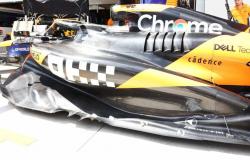Traveling with an electric car is feasible for many people, more than you might think and even those who need to travel on the motorway. Does it require a little adjustment? Yes. Does it require you to face some obstacles from time to time? Yes. Does everything always work like clockwork? No.
The context: it’s a business trip, I have to be in Bologna by 9am because the schedule of the presentation with test drive of the MG3 Hybrid is tight since I have the morning shift.
Now in my third year with an electric car, exceeded 50,000 kilometers on the speedometerhere you are a new story of real life, perhaps banal for those who already know and use electric cars. From Brianza to Bologna, a route that according to Google Maps requires 2/3 hours (at the set time), for a total of 450 kilometers return. The critical part is clearly that of the Milanese ring road in the morning…
Car
03 July

Car
21 May
HOW I RECHARGED AT HOME


Many sunny days, and some periods of not excessive clouds which still allowed us to produce, and here is the situation of the top-ups before the trip in two screenshots. In the second it may seem that I recharged the car on Tuesday 16th, but it is actually a bug with the Wallbox (reviewed here) which does not consider the session concluded until the cable is physically disconnected. In reality, the energy of the trip to Bologna (I left 100%) comes from:
- from Saturday 13th to Monday 15th April: various recharges with the photovoltaic, the car was not always stationary but in the meantime it also ran out of battery for several trips
- Monday 15 April (and the night of the Tuesday before leaving): 24.50 kWh recharged with photovoltaic, 8.56 kWh taken from the grid at night to find me on the morning of departure with 100% battery
THE OUTBOUND TRIP

The outward journey is all downhill, even literally since I start from a higher altitude. The traffic alternates between really slow phases, the ring road, and free routes where I can proceed at cruising speed. Some slowdowns, but in general it travels well even if there is never too much room to run. Trip average: 100 km/h. I leave at 6.40am, arrive just before 9.00am, total 2 hours and 20 minutes.
THE COLUMN FAILS

The MG event is hosted in Macron’s headquarters, a modern campus that hosts 6/8 columns (I’m going from memory). Two are usable, the others are reserved for Macron’s staff who, as I will see during the day, compete for them since they are always full.
I ask if I can reload and one is available, but I have to share it with an MG4 which probably belongs to the MG team. After enabling it, I connect: the event lasts until after lunch, so I imagine leaving Bologna with the car at 100% capacity given that I have 6 hours available of a stopped car with an 11 kW alternating current column, fantastic!

Product previews are hectic situations: you have little time, you have to take home a complete video, you often share the car with another colleague… in short, all this to explain because I didn’t notice the notification of the Tesla app who told me that at 9:53 the charging stopped. I could have called someone, unlocked the car remotely and had it start charging again, but I was taking the test drive and recording the video…
I don’t know the reason for the column being blocked, what is certain is that the initial plan to go home without stopping to recharge It has failed… At the Macron headquarters I can therefore recharge for just 40 minutes, going from 42% to 52% (7.46 kWh recharged at 11 kW in alternating current).
- charging time (with car stationary): 40 minutes
- time wasted specifically for charging: 0 minutes
- energy input: 7.46 kWh
- average charging power: 10.6 kW
- charging cost: €0
THE RETURN TRIP

Once the event is over, I get back on the road at 2.22pm. The return is always more energy-intensive than the outward journey, either due to the more nervous foot due to the rush to get home, or due to the fact that you go upwards (certainly not climbing the mountains, eh). I set the destination and the car asks me to charge at the Supercharger (which has now lowered its subscription prices).
I try to delete the stop from the itinerary, but I discover that with my “heavy foot” I wouldn’t get home given that I have always used the electric as I would use a thermal. First lane at 90mph? Not for me, thanks. In less than a quarter of an hour I’m in Modena, the charging station is right outside the toll booth: long live Telepass (or UnipolMove for a level playing field).
This year I’m experimenting with the four seasons (CrossClimate) to see how long it takes a powerful and certainly not very light electric car (even if among the lightest in the segment) to finish them. So my consumption is higher than the excellent Pilot Sport 4 EV tires that I had as original equipment.
Charging takes exactly 17 minutes. I don’t even get out of the car because I have a thousand emails to reply to and messages in various work chats to catch up on: I’m “lucky” because I can use the break time to work; in fact it’s convenient for me, otherwise I would have had to wait another two hours to respond to the most urgent work emails.
- charging time: 17 minutes
- time wasted specifically for charging: 17 minutes
- average charging power: 76 kW
- peak charging power: 100 kW
- energy input: 30 kWh
- charging cost: €14.40
From departure to arrival home, including charging, they go exactly 2 hours and 27 minutes to cover the 228 km of the return journey with an average of 116 km/h (from Supercharger to home, from Bologna to the Supercharger it was 90 km/h due to traffic). The traffic was flowing but intense and with several slowdowns, it was difficult to raise the average further but I never held back when I had a clear road (you can see from the graph).
SCATTERED THOUGHTS AND Q&A
I close with a stream of consciousness and with some answers to possible questions from those who have never followed this series of articles.
First of all, 450 kilometers return in one day is not something everyone can travel: it’s a lot and many don’t even manage it in a week. If we consider that to cover these 450 km only one stop of 17 minutes was necessary (let’s say 20) and that this stop could have been avoided, it is clear that there are many situations in which the electric car becomes as practical as the thermal. In fact, it’s more practical given that quick recharges on the motorway or at Superchargers are, at least for me, something sporadic even though I often make day trips of 200, 300 or more kilometers for work.
Did I necessarily have to get off the highway to recharge? No, leaving the motorway was useful for recharging at the Supercharger, which today has some of the best rates for fast charging. I could have exploited it the charging stations present in service stations highways, here those of Free To X:

Did I travel with any particular precautions? Noin three years of electric car I have always had a heavy foot enjoying the power of a car like the Model 3 Long Range… otherwise it would make little sense. There are those who travel with much softer feet, and consume records which I consider unrealistic. Not that they are unattainable, it just makes my foot itch if I keep it too high…
And the air conditioning? Always on, the Model 3 has a glass roof which, although designed to filter sunlight and reduce exposure, increases the perception of heat in the passenger compartment. So air conditioning is a must on sunny days.
In three years what have been the main problems? The charging network has grown a lot, but there are several critical issues to resolve. For those who travel, for example, the number of hotels that offer a socket is still limitednot understanding that even a very slow recharge of a couple of kW would be enough for “electric” customers. And the same goes for cities, many scattered slow top-ups are needed for those who park their car on the street.
The issue of rising prices exists, recently we have seen increases, and we have to keep up with tariffs and subscriptions, which I fully understand can annoy many. Personally, I know the offers and am quite up to date, but I’m lazy and I’ve noticed that I use fast top-ups so little that I can even afford to pay the higher price when I’m travelling, exactly like I used to pay for diesel at motorway cost (and not from the pump white) when I was traveling with my previous car.
Tags: column fails day MilanBologna















